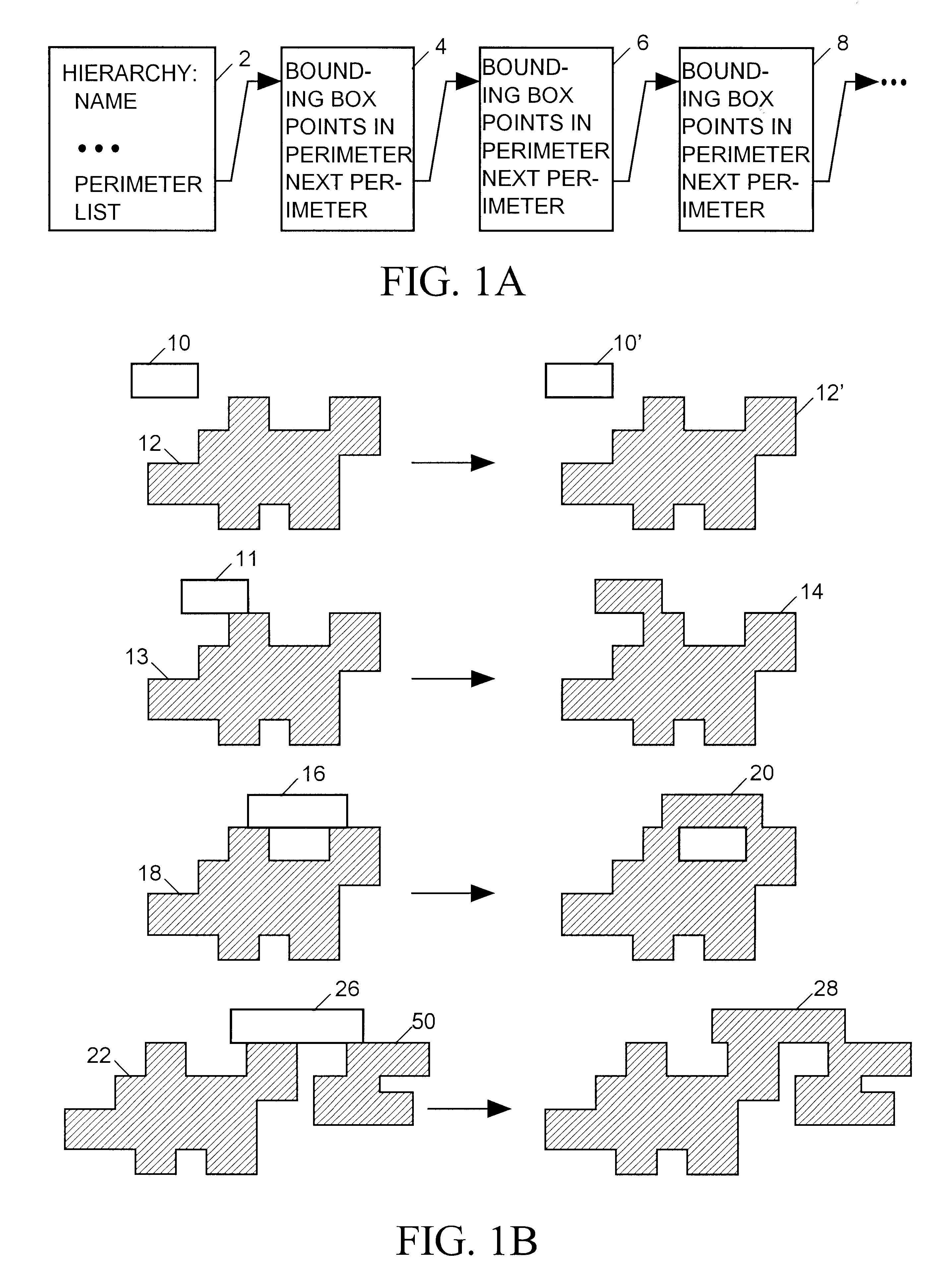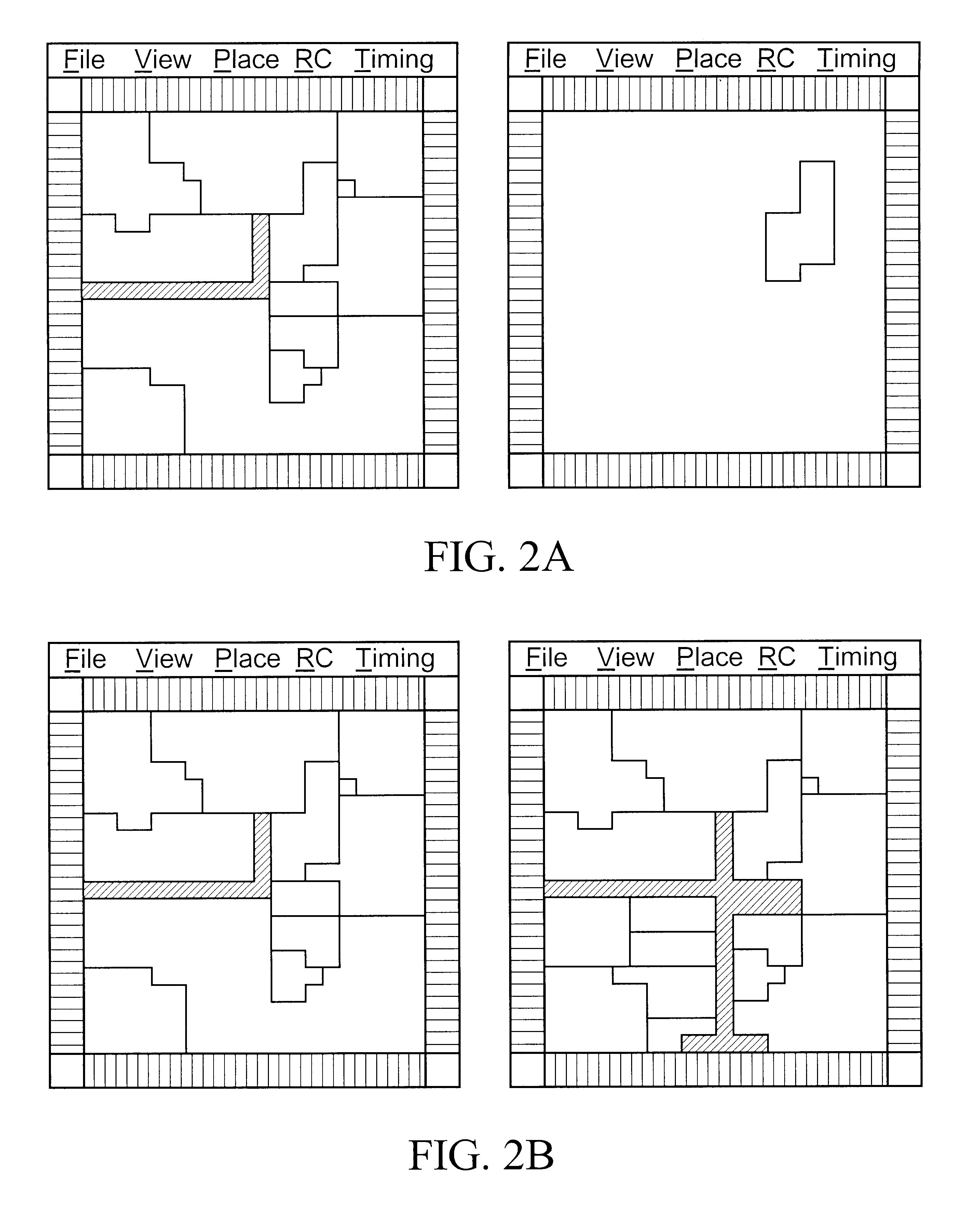Amoeba display for hierarchical layout
a hierarchical layout and amoeba technology, applied in the direction of cad circuit design, program control, instruments, etc., can solve the problems of unsatisfactory physical design, unsatisfactory physical design, and undesirable longer wire connection lengths
- Summary
- Abstract
- Description
- Claims
- Application Information
AI Technical Summary
Problems solved by technology
Method used
Image
Examples
2b
15. Case- Add bounding box b to top of perimeter and create n-1 so-called "doughnut-hole" or internal opening perimeters.
16. Else, bounding box b touches more than one existing disjoint perimeter.
17. Case-3: Merge all perimeters to bounding box (i.e., add doughnut holes, if touching bounding box in multiple places).
end
end merge
end.
When operating, present system continually determines list of perimeters by effectively growing or adding to such perimeter list to include instances in given hierarchy from bottom row, then adding instances from next-to-bottom row, and so forth, until all instances in such hierarchy are included therein.
FIG. 1B shows merger of new boxes on top of current perimeter list, for example, illustrating three cases of relationship between new box to be added to perimeter list relative to previously computed perimeter list, both before and after modification of current perimeter list.
Case-1: New box 10 does not touch existing perimeter 12. So, new disjoint perimet...
case-2b
16 touches only one existing perimeter in more than one place. So, new box is merged 20 to existing perimeter, thereby creating doughnut hole.
Case-3: New box 24 touches multiple existing perimeters 22, 26. So, merge perimeters 22, 26 are merged 28 with box 24.
Furthermore, in cleanup phase, after perimeters for hierarchy of design are computed, each perimeter bounding box and sort perimeters are computed in decreasing area, and then reference from hierarchy is saved to sorted perimeter list, as follows:
1. For each perimeter:
2. Save perimeter bounding box.
3. Sort perimeters in decreasing area
4. Set hierarchy cached perimeter list pointer.
Generally, resulting computation of perimeters for hierarchical subcircuit are similar to data structure, as shown in FIG. 1A. Perimeter list data structure for hierarchical subcircuits is illustrated, whereby perimeter list 2 relates hierarchically to next-level bounding box 4, which relates hierarchically to another level bounding box 6, which relat...
PUM
 Login to View More
Login to View More Abstract
Description
Claims
Application Information
 Login to View More
Login to View More - R&D
- Intellectual Property
- Life Sciences
- Materials
- Tech Scout
- Unparalleled Data Quality
- Higher Quality Content
- 60% Fewer Hallucinations
Browse by: Latest US Patents, China's latest patents, Technical Efficacy Thesaurus, Application Domain, Technology Topic, Popular Technical Reports.
© 2025 PatSnap. All rights reserved.Legal|Privacy policy|Modern Slavery Act Transparency Statement|Sitemap|About US| Contact US: help@patsnap.com



